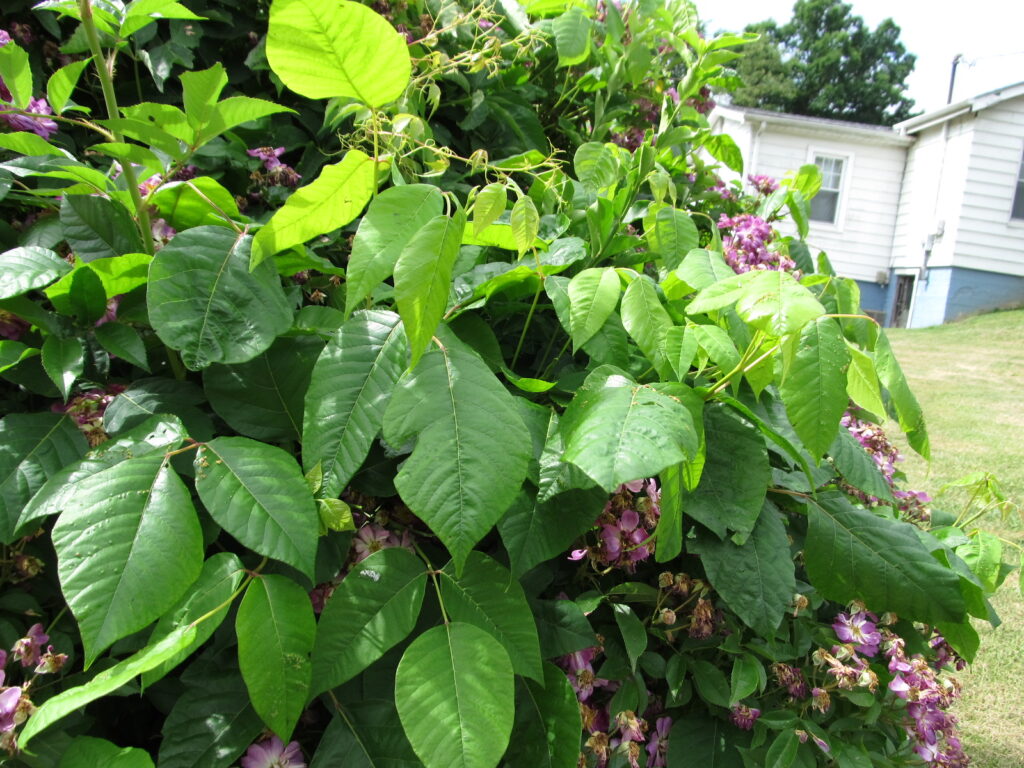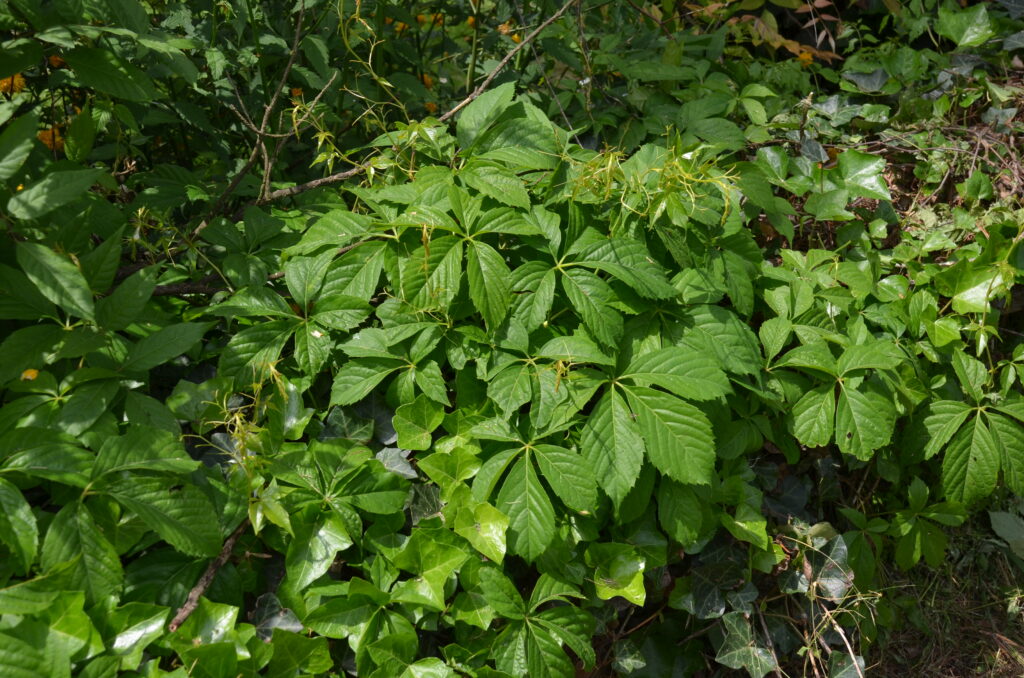“Leaves of three, let it be”. Parents teach their young children about this green plant menace — Eastern poison ivy (Toxicodendron radicans). The plant is familiar to hikers and gardeners alike.
Poison ivy is native throughout the United States and much of southern Canada and can be found in a wide variety of places from woodlands, fence rows, roadsides, and home landscapes. Contact with any part of the plant- leaves, stems and roots can produce an insanely itchy rash or skin swellings that can be linger over 3-4 weeks.

In sunny areas poison ivy can appear as a bushy, erect or trailing landscape shrub or as a climbing vine in the woods. As a woodland vine, it can attach tree trunks and climb via aerial rootlets. Poison ivy contains a toxic oil called “urushiol” that causes a skin allergy (dermatitis) to most humans and some pets. Infection can occur from direct contact with the plant, indirect contact (e.g., dog, rake, or shoes) or from breathing smoke from a fire of plant material. Some humans seem to be immune.
As a woody shrub, it can reach 6 feet high and upwards of 60 to 100+ feet tall attached firmly by rootlets to trees, walls, or fences or trail along the ground. Birds, reptiles, deer, and amphibians can eat the plant and its berries and use the plant as shelter. A variety of insects feed on the flowers of poison ivy too – from beetles to flies, bees, wasps, ants, and butterflies.
Each compound leaf is arranged in groups of three. The middle leaflet is longer than the outer two. Their shape and size may vary from smooth, rounded edges to serrated edges to shallowly lobed edges. Poison ivy leaves are shiny and bright green in spring, green and less glossy by late summer, and turn red or reddish yellow in fall. Plant may be mistaken for Virginia Creeper (Parthenocissus quinquefolia).

Poison ivy can be removed by either mechanical means– such as by repeated mowing or pulled with gloved hands. An alternative is to apply specific herbicides to freshly cut stumps (within 36 hours). Herbicides are most effective in late summer and multiple applications may be needed. Read and carefully follow the label as these chemicals are harmful to many nearby landscape and garden plants. Here is a short listing:
- Roundup (Glyphosate) – kills poison ivy and many other herbaceous and woody weeds; shield nearby desired plants.
- Weed-B-Gon (2, 4-D) – kills many broadleaf weeds including poison ivy but does not injure grass.
- Spectracide Weed Stop (2, 4-D, MCPP, & Dicamba) – apply against broadleaf weeds; will not injure grasses.
- Weedazol (Amitrole) – available in either liquid form or a wettable powder.
Do not burn poison ivy as the fumes are as toxic as the oils that get on skin. Also, avoid weed wacking. Wear work clothes that protect legs and arms and safety goggles over eyes. Launder all work clothes separately from other garments.
MT Cuba Center in Greenville, DE lists the benefits of poison ivy…more than 60 species of birds eat its fruit, and many pollinators frequent its blooms.

 Posted in
Posted in 
